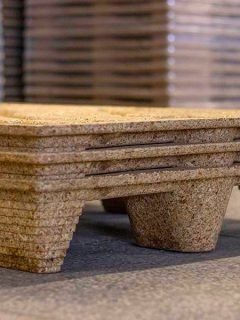In this article, we explore the vast world of pallets. We’ll be taking a closer look at INKA wood fibre pallets, which are particularly light and environmentally friendly. They are an excellent solution for handling and transporting goods. Read on to find out if they’re right for your business.
1. What are INKA wood fibre pallets and how are they made?
Pallets were originally made up of a set of wooden planks… During the Second World War, this type of pallet was used extensively by the American army to ship goods to Europe. This marked the beginning of their immense popularity. This great success then led to the design of variants made from other materials. In addition to plastic and cardboard, pallets have also been designed in wood fibre, such as the models from the German brand INKA.
A wood fibre pallet is assembled from compressed old and used wood. The wood is first shredded and then dried using a high-pressure forming process. Both the wood chips and the binder (urea resin) are entirely natural. At the end of its life cycle, a moulded pallet can easily be transformed into a new pallet, or even used as fertiliser. At RAJA, you can choose between three types of pallet:
| Mini-pallet 400 x 600 mm 400 x 800 mm 600 x 800 mm 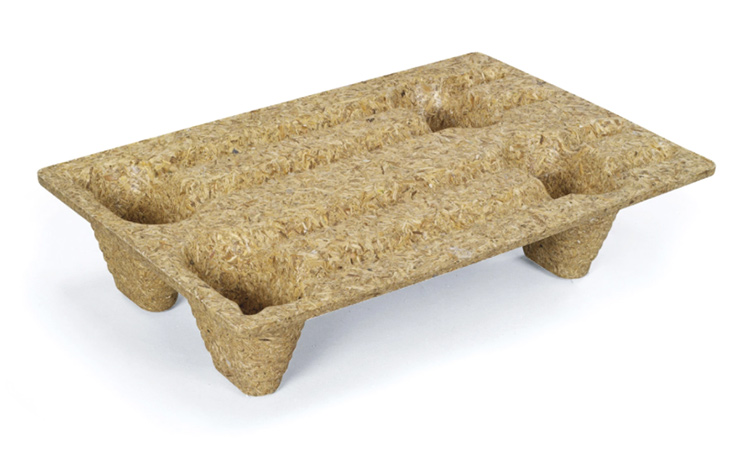 |
Standard pallet 800 x 1200 mm 1000 x 1200 mm . 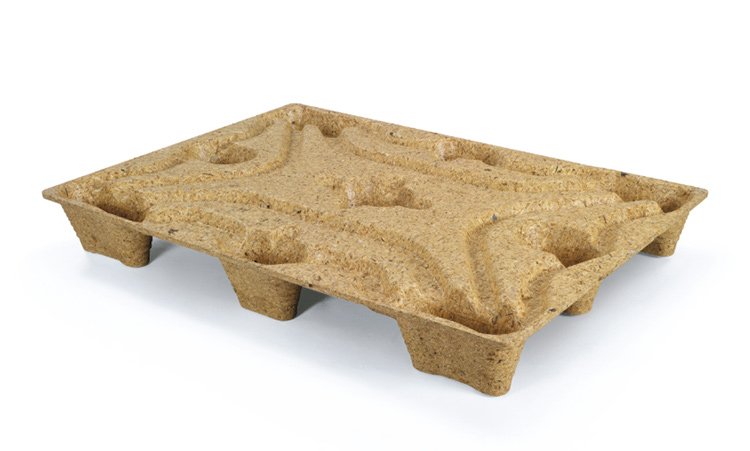 |
Sea pallet 760 x 1140 mm 1140 x 1140 mm . 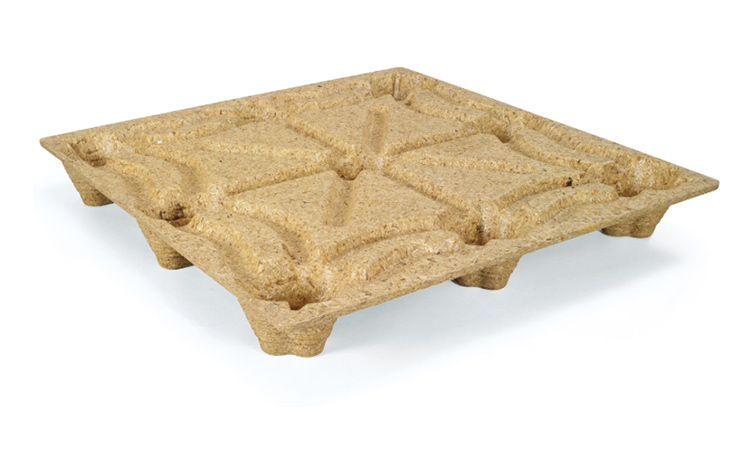 |
| Small pallets for transporting a limited quantity of goods. | The most versatile variant, with uniform dimensions. | Suitable for loading shipping containers thanks to its adapted dimensions. |
2. What are the advantages of INKA wood fibre pallets?
All INKA wood fibre pallets are lightweight, space-saving and meet a range of essential standards. Thanks to their wide range of sizes, they are the perfect solution for transport pallets, compact displays or container pallets. Their use can offer companies numerous advantages, such as more efficient logistics, reduced transport costs and better management of natural resources. What’s more, choosing eco-responsible pallets can contribute to a green and environmentally-conscious corporate image.
- Economical : these pallets offer excellent value for money, keeping storage and transport costs under control. Thanks to their production technology, they comply with ISPM15 standards. So you don’t have to worry about extra costs to ISPM15 countries.
- Strong grip : the patented grip technology used in the production of INKA wood fibre pallets guarantees a strong and resistant design. The pallets are suitable for transporting medium to heavy loads.
- Lightness: INKA pallets are remarkably lighter than traditional wooden pallets. Despite their low weight, they can carry a considerable mass, making them versatile. The largest formats can withstand static loads of up to 2,700 kg.
- Space-saving: the pallets are easy to stack and nest (see image below) and take up up to 50% less space than ordinary Euro pallets.
- Standardised : INKA pallets are designed in accordance with international standards. You can therefore easily use them in combination with many pallet trucks or automated storage systems.
- Quality certificates: INKA pallets are subject to rigorous quality controls. They are generally certified in accordance with ISO 9001 and ISO 14001 standards.
- Global availability: INKA wood fibre pallets are distributed worldwide and widely used in various industries, including food, automotive, chemical or pharmaceutical.
- Safe : these pallets contain no nails, splinters or sharp corners. This means they can be handled safely by warehouse staff.
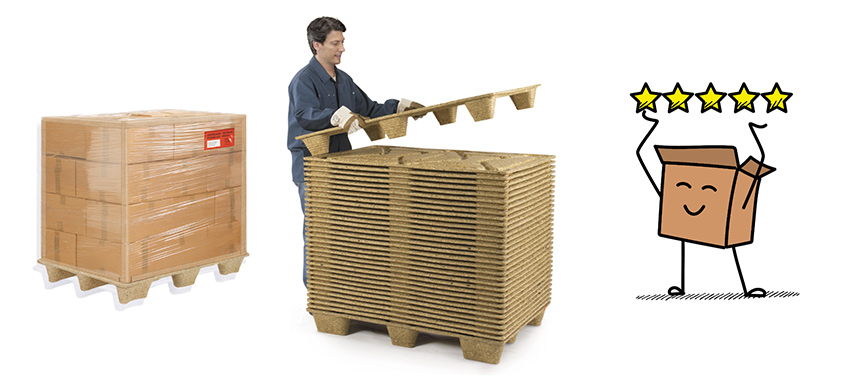
3. An eco-responsible transport solution
INKA moulded pallets are mainly made from PEFC-certified wood from forests managed in an eco-responsible way. This reduces the impact on the environment and promotes responsible forest management. What’s more, they are easy to reuse and recycle. At the end of the pallet’s life cycle, they can be recycled or transformed for other applications, to minimise (residual) waste.
4. How do I load and wrap a pallet?
In this final step, let’s look at some tips for safely loading and wrapping a fibreboard pallet. Start by placing the heaviest boxes or loads at the bottom. If there are no major differences in weight, place the smallest boxes at the bottom and the largest at the top. You’ll find that this gives the pallet a more stable stack. Never place your crates beyond the edge of the pallet, as this increases instability and can damage the loads.
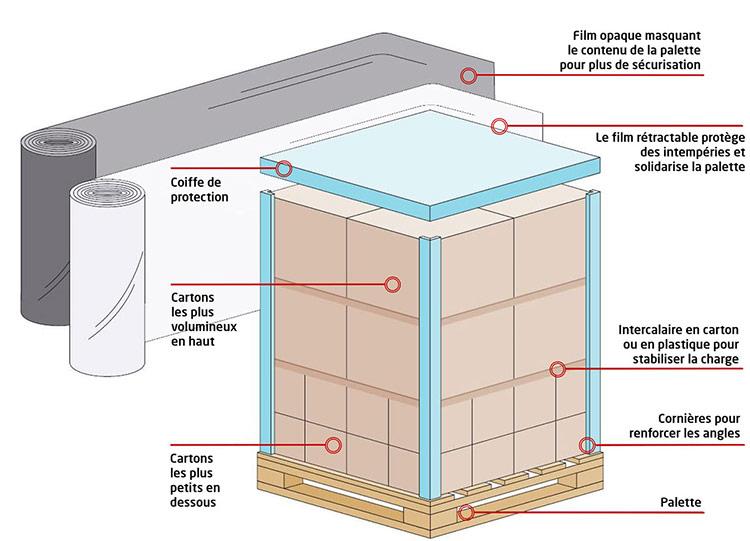
After stacking comes wrapping. Wrapping with stretch film gives the load greater stability. What’s more, the goods are better protected against moisture and the pallets can be loaded more easily into lorries or containers, for example. Do you need to wrap more than 15 pallets a day? Then opt for an automated system with a wrapping machine. It adapts perfectly to the shape of the pallet and your load. The pallets are wrapped more stably with the ideal amount of film: not too much, not too little. There are machines capable of handling up to 250 pallets a day. This means considerable savings in time and productivity.















